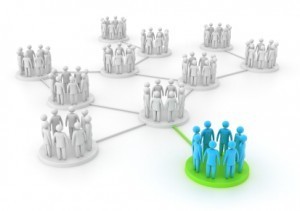The 3 Most Widely Used B2B Segmentation Methods
 There are a myriad of different B2B customer segmentation approaches being used out there, but they can essentially be boiled down to three basic methodologies that seem to be the most widely used and also the most actionable: Industry/Firmographic, Customer Tiering & Needs-Based Segmentation.
There are a myriad of different B2B customer segmentation approaches being used out there, but they can essentially be boiled down to three basic methodologies that seem to be the most widely used and also the most actionable: Industry/Firmographic, Customer Tiering & Needs-Based Segmentation.
Let's compare the benefits of using them, and also some of the challenges our members experience when trying to implement these segmentation approaches in their organizations:
1) Industry/Firmographic – This approach is to the business-to-business world as demographic segmentation is to the business-to-consumer world. If we think of demographic segmentation as helping organizations group consumers by shared characteristics (like age, gender, ethnicity, income level and zip code), then we can picture industry/firmographic segmentation as helping organizations characterize customers by industry attributes (such as its competitive environment and fixed costs, or simply size and geography).
Benefits : Relatively low cost, easy to measure and easy to communicate to sales
Drawbacks : Difficult to scale since customer needs can vary within a segment
Company Example : See how FedEx created tailored, segment-specific offerings and collateral based on customers' industries.
2) Customer Tiering – This approach incorporates a couple of key factors such as potential fit (the customer's alignment to a supplier's strategy) and opportunity (long-term revenue potential at the customer's organization).
Benefits : Incorporates more of a forward look, since it captures growth related information that is often overlooked in other methodologies
Drawbacks : Does not guarantee a homogenous set of needs (similar to industry/firmographic), and also requires a significant amount of time from management to get it up and running
Company Example : See Schneider Electric's opportunity/fit segmentation scorecard.
3) Needs-Based Segmentation – Often seen as the most predictive method, this approach will often replace a behavioral- or transactional- focused view in many organizations as it focuses on the problems our customers are trying to solve.
Benefits : Very scalable since it limits the number of segments to a manageable set and is also very resonant with customers
Drawbacks : Because it's tough to just look at a customer and know their needs, it can be very difficult for the sales force to apply a needs-based segmentation lens when they are out with a prospect or customer
Company Example : See Dow Chemical's approach for identifying customer segments that exhibit similar needs and loyalty drivers.
Let's draw some high-level conclusions regarding these methods. As you move from industry/firmographic…to customer tiering…to needs-based segmentation methods, there is an increase in the following:
The complexity associated
The resources needed (staff, skill set, money, data, etc.)
The insight these models provide
We'd be interested to hear if your company uses any of these methodologies, or perhaps more than one to ensure a richer understanding of the customer. What benefits and/or challenges have you experienced with them? Let us know in the comments section below.
Brent Adamson's Blog
- Brent Adamson's profile
- 9 followers



